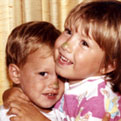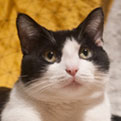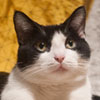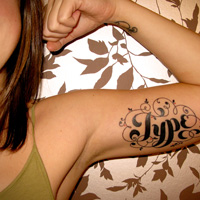“twitter users”

@me
follows @mymom, @mybrother, and @mycat

@mymom
follows @me and @mybrother

@mybrother
follows @me and @mymom

@mycat
follows @me

@fanperson
follows @me, but I do not follow him

@totalstranger
doesn’t follow any of us and we do not follow her
who sees what
very important information is in red

I am a compulsive oversharer!
• anyone that follows @me will see this in their Home feed
• this will show up on my profile (Me) page

@me OMG ME TOO! It’s like a disease!
• because I do not follow @fanperson, this does not show up on my Home feed, instead this shows up in my Notifications (Mentions) feed
• because @fanperson put my username at the beginning (this is called a reply or @reply), it does not show up on @fanperson’s followers’ Home feeds, unless they follow us both
• because this tweet begins with my username, it does not show up on their profile (Me) page

@mybrother hey bro, que pasa?
• by putting another person’s username at the start of a statement, it limits who sees it
• @me, @mymom, and @mybrother see this on our Home feeds because we all follow each other
• people that follow both @me and @mybrother will see this on their Home feed
• people that only follow one of us will not see this on their Home feed
• @mybrother will see this in his Notifications feed as well as his Home feed because we follow each other

Not much, @me. What’s good?
• anyone that follows @mybrother will see this on their Home feed, whether they follow @me or do not follow @me
• If a username is not at the start of a statement, everyone that follows @mybrother can see it
• I will see this in my Notifications feed because my username is used within the tweet
• This is generally the incorrect way to reply. There are times when you want to share a reply with your followers (e.g. if your reply contains something useful for your followers) but not in this circumstance or similar circumstances

.@mybrother only ate pizza from age 5 to 25. #turtlepower
• if you DO want to share a reply with your followers, you can put any character before their username (typically a period) and this allows all of your followers to see it. It takes the person’s username and puts it “in the middle” of the tweet.

@mymom @mybrother so. full. of. pizza.
• @me, @mymom, and @mybrother see this on our Home feeds because we all follow each other
• people that follow @me and @mymom (both of us) will see this on their Home feeds
• only the first user mentioned at the beginning and my username control who sees this tweet, any users mentioned after, even directly after, does not affect this

Have you seen @me‘s new zany website thingy??
• because I do not follow @totalstranger, this does not show up on my Home feed
• instead this shows up in my Notifications feed—as long as your username is somewhere in their post, it will be in your Notifications feed
• because my username is in the middle of the statement, this does show up on @totalstranger’s followers’ Home feeds
• because my username is in the middle of the statement, this does show up on @totalstranger’s profile (Me) page
• @totalstranger does not follow me, but can still @mention me (use my username) in a tweet and I will see it in my Notifications feed

This morning @mycat puked on my bed, not cool.
reply • retweet • like

@me I iz sorries!
reply • retweet • like

@mycat It’s ok, you are still my everything <3
reply • retweet • like
• @mymom @mybrother and @fanperson do not see this conversation on their Home feeds because they do not follow both of us, but they do see my original tweet
• @mycat and @me will see each others tweets in our Notifications feed as well as our Home feeds because we follow each other
• all users can see all replies to a tweet by clicking on it—the replies are threaded together chronologically, so you can see the full conversation surrounding any given tweet. Usually the only people who do this are those participating in the conversation or those interested in what others might have said on a topic. For instance, if someone tweeted “Any recommendations for a restaurant in Mitte, Berlin?”, others interested in those recommendations might click to see what has been said. There is a difference between “replying to” a tweet and simply beginning a tweet with a person’s username. The former will keep the conversation in tact, and the latter will not.
• because you can see a reply thread by clicking on a tweet, any tweets that you write are not 100% private even if directed at another user. The only way to make sure a conversation is 100% private is to exchange direct messages (see the Messages tab in the browser or on mobile)
Direct Messaging
Retweeting

Check out this cat vid! tinyurl.com/2funnycats
Check out this cat vid! tinyurl.com/2funnycats
reply • retweet • like

RT @me Check out this cat vid! tinyurl.com/2funnycats

hashtags

Having tons of fun at the #imaginaryconference!

Paula Abdul & Color Me Badd was #myfirstconcert! You?

When will this cough stop?? #imeanreally. #srsly. #cough.
